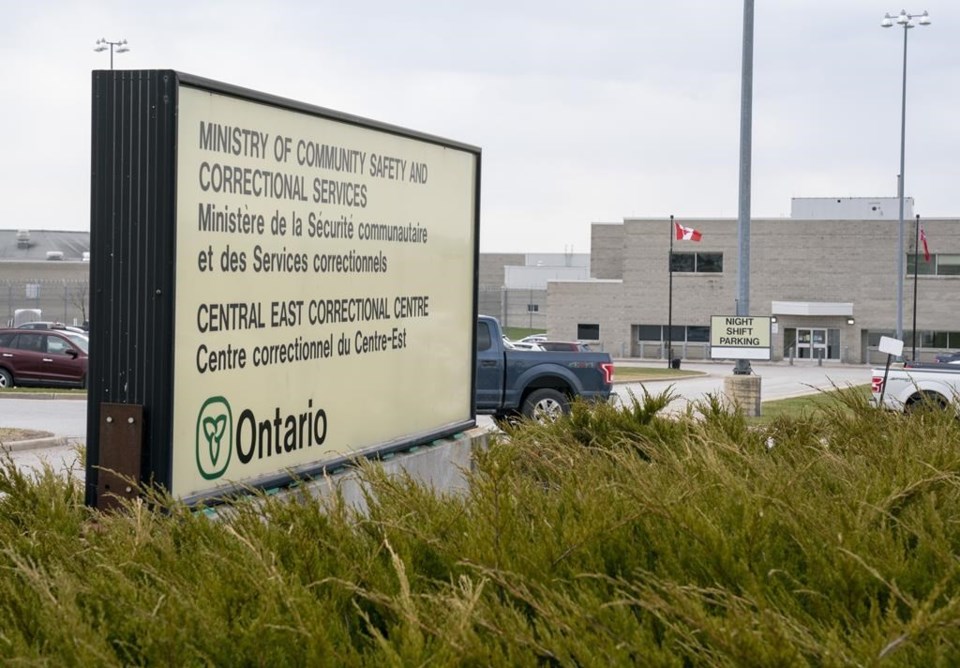TORONTO — Drugsare smuggled into an eastern Ontario inside the body cavities of inmates and in the mail they receive, a deputy superintendent at the facility jail told a coroner's inquest on Tuesday.
Dan Tremblay testified at an inquest that is examining the circumstances of five drug-related deaths at the Central East Correctional Centre in Lindsay, Ont., which occurred in separate incidents between October 2018 and April 2019.
Tremblay said inmates ingest small amounts of packaged drugs or insert them rectally or into their pelvic region to bring them into the facility before secreting and distributing the drugs inside the jail.
Tremblay said potent synthetic drugs are brought inside in small amounts, which makes detecting them very difficult.
"The body scanner is great when it comes to non organic condensed materials or material like a weapon that's made out of ceramic or metal. It will glow in this in this device," he said.
"Items that don't need to be as condensely packed anymore such as fentanyl because the amount required is not nearly as high, it becomes a lot more difficult to identify those within the body cavity."
Tremblay said any inmate admitted to the facility has to go on the body scanner, as well as any inmate suspected to be hiding something.
"They're moving on to different techniques, including using Ziploc bags that are wrapped in electrical tape and things like that just to make it less condensed and less easily viewed on the scanner," he said.
The inquest -- which started hearing from witnesses on Monday -- is examining the deaths of Steven Frenette, 35, who died on Sept. 20, 2018; Daniel Foreman, 39, who died on Oct. 3, 2018; David Bullen, 50, who died on Dec. 29, 2018; Jonathan McConnell, 36, who died on April 28, 2019; and Susan Borja, 50, who died on Aug. 10, 2019.
It is expected to look at issues of drug overdoses at the correctional facility and consider strategies to prevent further deaths.
Tremblay said some inmates are getting mail that has been soaked in drugs such as methamphetamine, fentanyl and oxycodone.
Jail staff have also seen an increase in the use of drones that are attempting to drop drugs and weapons in open-air yards in the facility, he said.
"Thankfully, our staff were diligent and our security manager noticed something that was going on, so we prevented it from entering from the yard into the facility."
He said the jail staff have installed a wire mesh above the yards with thinner openings to make drone drops more difficult.
"As technology increases and makes our lives easier, in the correctional setting it makes our job a lot more difficult," he said.
"The inmate population is very innovative so everything that we do to combat it they then try to figure a way around that system."
The jury heard Monday from the mother of Frenette, who wrote in a statement that her son struggled with addiction for years and used drugs to "self medicate" with mental illness and tragedy in his life.
The inquest jury will hear evidence that will help them reach findings on the details of the inmates' death and they can also make recommendations on how to prevent similar deaths in the future.
It is expected to last 15 days and hear from about 25 witnesses.
This report by The Canadian Press was first published Nov. 15, 2022.
Maan Alhmidi, The Canadian Press
